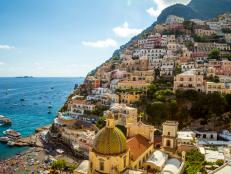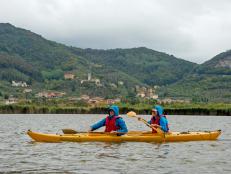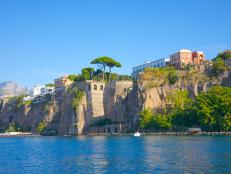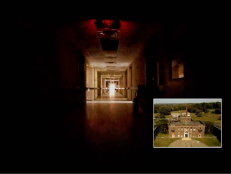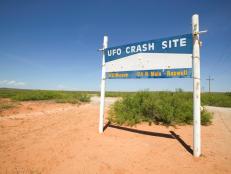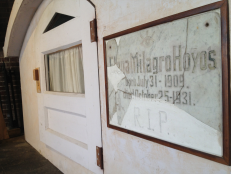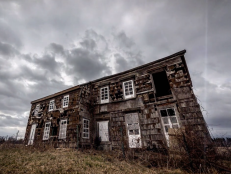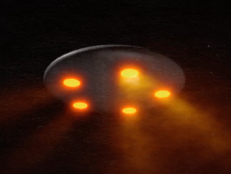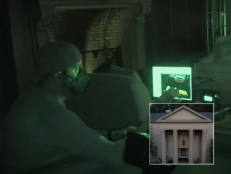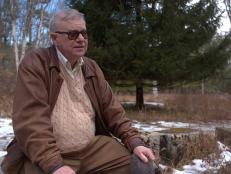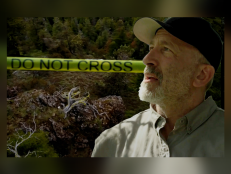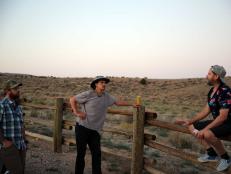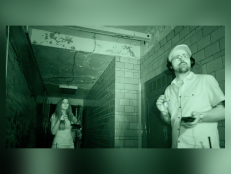Lingering Secrets of Pompeii
Though the spectacular city met its tragic end nearly two thousand years ago, archaeologists are still hard at work unearthing its story. What might the next chapter be?

In 79 AD, a massive cloud of volcanic ash and pumice exploded from Mount Vesuvius and froze Pompeii in time. In the blink of an eye, the city became both a site of almost unimaginable loss and a priceless relic: when it was rediscovered at the end of the 16th century, we learned that Pompeii’s demise went hand in hand with its preservation, and that its architecture and artifacts had been entombed beneath the lethal material that had smothered it.

Pompeii and Vesuvius, by ElfQrin [CC BY-SA 4.0], from Wikimedia Commons
The ancient Roman city’s remains are so extensive that we’re still digging away at them. For Buried Alive in Pompeii: A Mysteries at the Museum Special, Don Wildman traveled to Italy for a firsthand look at the latest discoveries — and to peek ahead at possible answers to researchers’ ever-evolving questions. Here’s some of what they’re asking each other — and what they’re asking the city itself.
Are Some of Pompeii’s Treasures Gone for Good?

A 1776 etching of the discovery of the Temple of Isis (Wellcome Images).
Pompeii was first “rediscovered” in 1599, when an excavation crew led by the architect Domenico Fontana stumbled upon frescoes while digging a tunnel to divert the River Sarno. By the 18th century, the legend of the lost city had begun to attract significant attention — and as of 1740, plunder by treasure-seekers was underway in earnest.

A century later, the king of Naples charged an archaeologist named Giuseppe Fiorelli with leading excavations of the city. Fiorelli insisted upon methodical, top-down exploration of the site, and his teams pitched tents to protect newly-exposed material. Because of the painstaking preservation techniques he pioneered, more than a third of Pompeii is still buried intact after more than three hundred years of excavation. On the other hand, we may never know what disappeared from the city — or what was destroyed — in the wild centuries when its riches were up for grabs.
What’s in the Villa of the Papyri — and Will We Ever Read It?

Ten miles from Pompeii, Herculaneum shared much of its terrible fate — with a notable difference. Organic material that was destroyed in the former was preserved in the latter, and when eighteenth-century excavators unearthed a villa in its ruins, they also revealed the ancient world’s only intact library. More than 1,800 carbonized papyrus scrolls were discovered in what is now known as the Villa of the Papyri, and hopeful scholars speculate that those scrolls could be masterpieces of Greek and Latin literature that were thought to have been lost forever.
Most attempts to read those scrolls have only resulted in damage, but in 1999, researchers hit upon a promising new technique: a NASA-developed process known as multi-spectral imaging could be used to take infrared photographs of the carbonized papyrus without unrolling it. Black ink might then be visible —and perhaps even legible — on scrolls that were previously thought to be blank. The technique is still being improved, and initial scans are considered “proof of concept” rather than conclusive evidence that scholars will succeed, but as one classicist put it, “[a]nybody who focuses on the ancient world is always going to be excited to get even one paragraph, one chapter, more. The prospect of getting hundreds of books more is staggering.”
What Would Happen If Vesuvius Erupted Today?

When Vesuvius rumbled to life in 79 AD, Pliny the Elder’s description (from a vantage point some 18 miles away) became the first eyewitness account of its eruption that has survived to modern times. It wasn’t the last: Vesuvius has remained active, and it killed 26 people in its most recent eruption (in 1944). There’s now a civil protection program in place to evacuate more than 550,000 people who live in the 200 square kilometers surrounding the volcano, and volcanologists can now use warning signs like seismic activity to trigger that evacuation. That said, short-term knowledge is all we’ve got — and no one can say with certainty when disaster might strike. “Put simply,” as one Italian official said, “we do not know which generation will pay the price.”
Join Don Wildman for the premiere of Buried Alive in Pompeii: A Mysteries at the Museum Special on Travel Channel at 9pm ET on Wednesday, January 30th.


